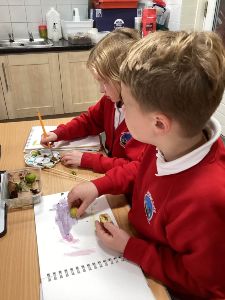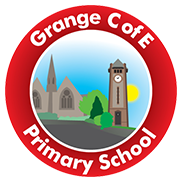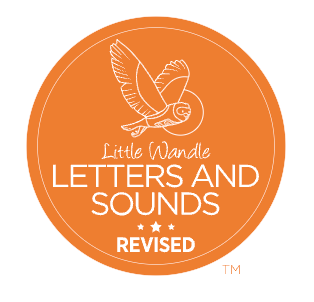Art
Art and Craft at Grange C of E School
Purpose of study
Art, craft and design embody some of the highest forms of human creativity. A high-quality art and design education should engage, inspire and challenge pupils, equipping them with the knowledge and skills to experiment, invent and create their own works of art, craft and design. As pupils progress, they should be able to think critically and develop a more rigorous understanding of art and design. They should also know how art and design both reflect and shape our history, and contribute to the culture, creativity and wealth of our nation.
Intent
We all love Art at Grange C of E Primary School. We use ‘Kapow’ as a scheme of work and together we aim to inspire our pupils and develop their confidence to experiment and invent their own works of art. We give pupils every opportunity to develop their ability, nurture their talents and interests, express their ideas and thoughts about the world, as well as learning about art and artists across cultures and throughout history. Together we support pupils to meet the National Curriculum end of Key Stage attainment targets and fully cover the skills and progression.
As an ‘Artsmark’ Silver award school, we will continue to inspire our children to create, experience and participate in great arts and culture. Where we can we involve the children in local art projects and learn from artists and crafts people locally as well as nationally and around the world.
Implementation
Our lessons are sequential, allowing children to build their skills and knowledge, applying them to a range of outcomes. The formal elements which are a key part of the National Curriculum are also woven throughout the units.
Key skills are revisited again and again with increasing complexity in a spiral curriculum model. We have a 3-year rolling program for our Year 3, 4 and 5 classes, this allows pupils to revise and build on their previous learning for single and mixed aged classes.
The units are organised into four core areas of drawing, painting and mixed-media, sculpture and 3D and craft and design.
Our progression of skills and knowledge document shows the skills that are taught within each year group and how these skills develop to ensure that attainment targets are securely met by the end of each key stage. Key skills are revisited again and again with increasing complexity in a spiral curriculum model. We have a 3-year rolling program for our Year 3, 4 and 5 classes, this allows pupils to revise and build on their previous learning for single and mixed aged classes. Creativity and independence are embedded into our lessons which supports students to make their own creative choices and decisions, so that their art outcomes are unique to our pupils.
Art lessons are fun and practical, they encourage experimental and exploratory learning with pupils using sketchbooks to show their ideas. Every lesson can be differentiated to ensure everything can be accessed and enjoyed by all and opportunities to stretch pupils learning is planned for. Children learn about and take inspiration from artists and crafts people including those working today and famous artists of the past.
Impact
Our curriculum involves children in the evaluation, dialogue and decision making about the quality of their outcomes and the improvements they need to make. By taking part in regular discussions and decision-making processes, children will not only know facts and key information about art, but they will be able to talk confidently about their own learning journey, have higher metacognitive skills and have a growing understanding of how to improve.
We monitor the impact through formative and summative assessment opportunities for each child through observing their work and talking with them about their next steps.
Children will leave Grange C of E Primary school equipped with a range of techniques and the confidence and creativity to form a strong foundation for their Art and Design learning as they go on to secondary school.

Prehistoric Art
Our impact in Art and Design shows that our children will:
- produce creative work, exploring and recording their ideas and experiences.
- be proficient in drawing, painting, sculpture and other art and design techniques.
- evaluate and analyse creative works using subject-specific language.
- know about ‘great’ artists and the historical and cultural development of their art.
- Meet the end of key stage expectations.
“Creativity is intelligence having fun.”
Albert Einstein.









